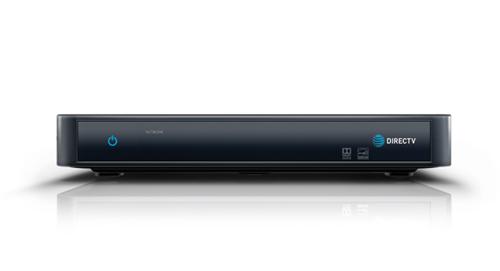There’s a newer version of this article. Click here!
It’s more confusing than ever. When you’re planning your home viewing, you may be considering putting DIRECTV in every room. There’s a little more to it than just running a cable. You need to be using the right satellite dish and you need to understand how DIRECTV thinks about your home system.
You might think of the number of black boxes in the house, but DIRECTV thinks in terms of “tuners.” In DIRECTV parlance, a tuner is defined as the ability to watch or record one channel. In order to watch one thing and record another, you need two tuners. But it gets a little more complicated than that.
Receivers vs. Clients
DIRECTV has done everything they possibly can to make this as confusing as possible. On the one hand they have receivers like this H25:

On the other hand they have clients like this C61K.

These black boxes are identical in size and other than the fact that one puts out 4K and the other doesn’t, they act almost identically. DIRECTV’s done this on purpose because they don’t want you to think about what’s in front of you. So, the only way to really know if you have a receiver or a client is to look at the model number, usually found on a green sticker on the bottom, or look to see if there is an access card (which DIRECTV could be conveniently hiding behind a door.)
Why that’s important
A receiver has a tuner in it and can work by itself.
A client doesn’t have a tuner in it and only works with a DVR.
Simple as that.
Why you need to count up tuners
Most new DIRECTV installs can serve up to 13 tuners. There are several ways to get as many tuners as you need, but it usually involves putting up a new dish or modifying the dish you have. So it’s important to get an accurate count of what you’ll need. Luckily it’s easy with some simple math, and here’s a lookup table:
| Equipment | # of tuners |
| HS17 Genie 2 DVR | 11 (using Reverse Band dish) |
| HR54 4K Genie DVR | 7 |
| HR44 Genie DVR or H44 Genie Lite | 5 |
| HR24 DVR (or earlier DVR) | 2 |
| H25 (or any other receiver) | 1 |
| C61K Genie Client (or any other client or DIRECTV-Ready TV) | 0 |
Clients and DIRECTV ready TVs don’t have tuners, that’s why they count as zero. Now, add up all the tuners you have. Is that number more than 8? You may have to rethink your system.
There’s an excellent tutorial on upgrading your system to use either an external multiswitch or new LNB, but with today’s technology, most people will not need a separate multiswitch, just the right LNB. Your choices come down to:
Reverse Band 3 SWM LNB: This is the recommended LNB for almost all installs. It will support 13 tuners in most installations. If you are willing to micromanage the order in which your receivers power up, you can get 21 tuners out of it.
Reverse Band 5 SWM LNB: This LNB is only used for customers who absolutely must get programming from the 119 satellite, which has very little programming left on it. Just like the Reverse Band 3, 13 tuners are supported but with some babying you can get 21.
Reverse Band 5 Legacy LNB: (Expected in 2018) This LNB is used for 4K installs where more than 13 tuners are needed, or in commercial installs. It’s the LNB to use if you plan on using a SWM-30 multiswitch for ultimate expandability.
Swapping out the LNB
If you already have a SWM system, you can simply take off one LNB and put on another. I suggest marking the position of the alignment screws on the back of the dish with a Sharpie so you know that you haven’t moved anything, but in most cases it’s as simple as unscrewing one LNB and screwing in the other.

To confirm that you have a SWM system, just press the {DASH} button to the left of the zero on your remote, while you’re watching live TV. (If you’re on a Genie system with the new menus, press {DASH} twice, but all Genie systems are SWM systems.)
If it says “SWiM Connected” then you are. If it doesn’t, you’ll need to plan a little more carefully and that tutorial I mentioned tells you what you’ll need.




